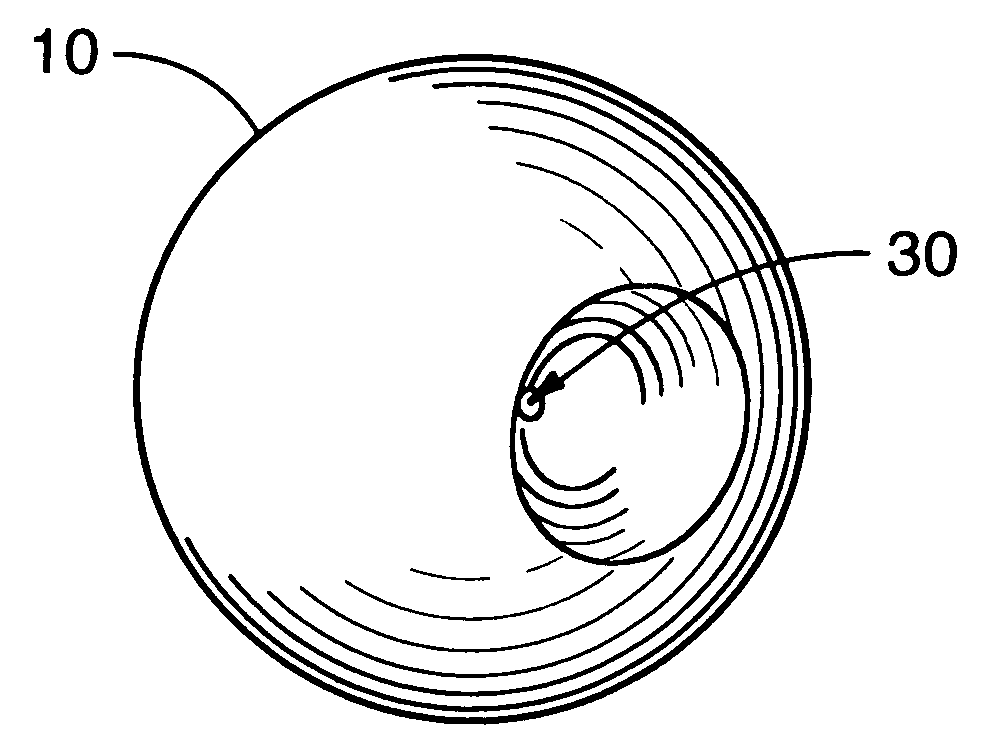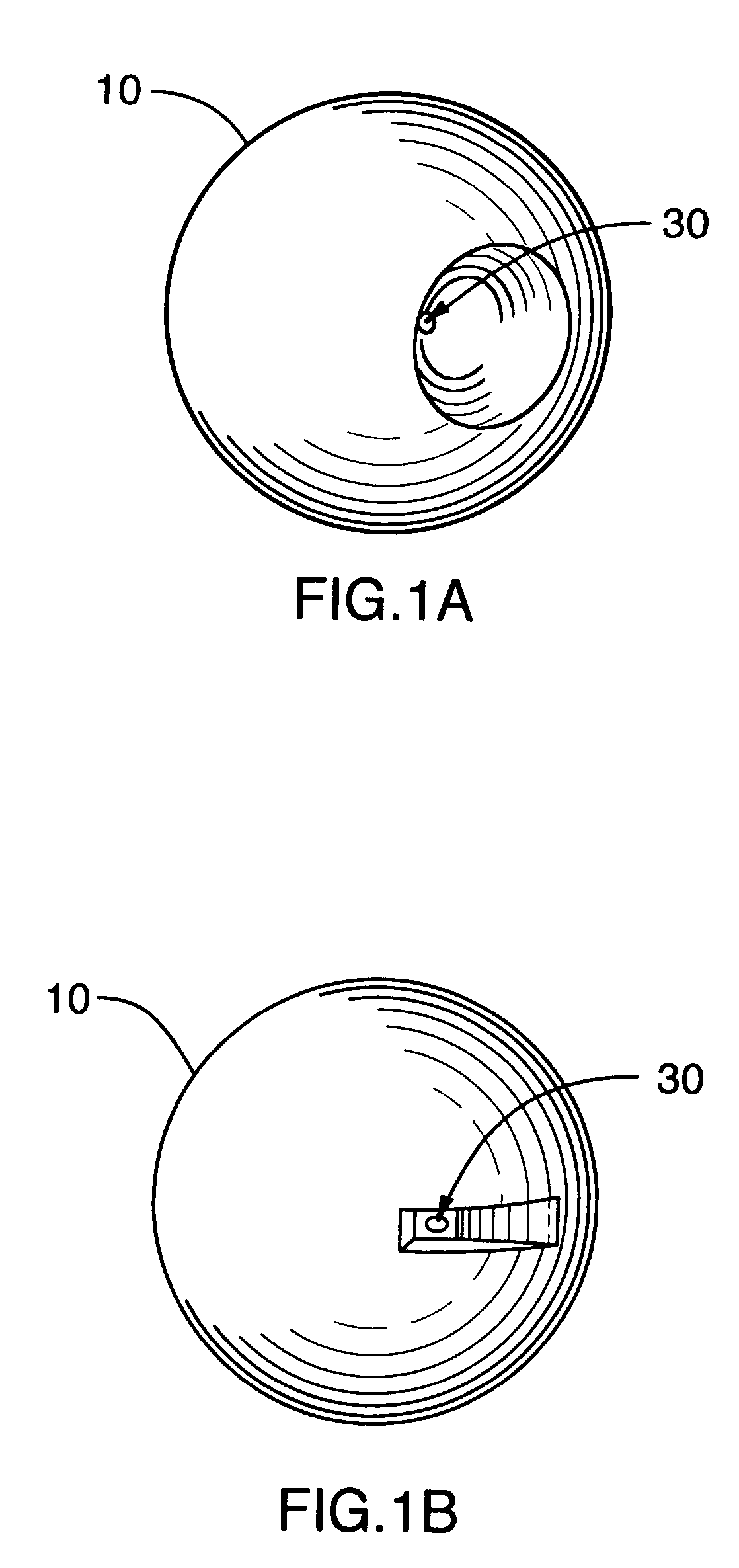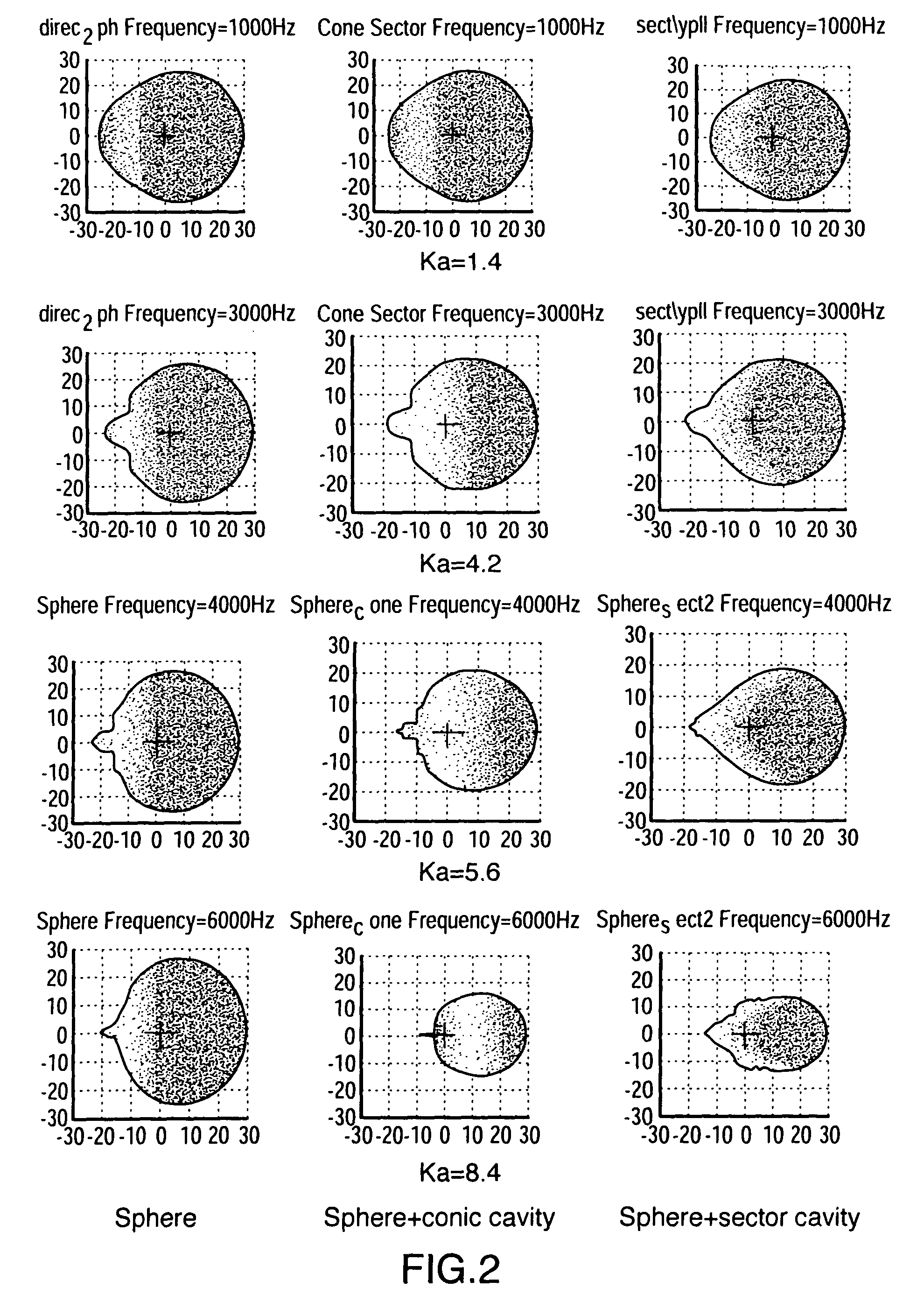Microphone array with physical beamforming using omnidirectional microphones
a microphone and beamforming technology, applied in the direction of frequency/directions obtaining arrangements, transducer types, electrical equipment, etc., can solve the problems of low frequency directivity loss, restricted inter-microphone spacing, and relatively modest directionality, so as to reduce the cost, the effect of expanding the working frequency range of the microphone array and reducing the cos
- Summary
- Abstract
- Description
- Claims
- Application Information
AI Technical Summary
Benefits of technology
Problems solved by technology
Method used
Image
Examples
Embodiment Construction
[0043]To illustrate the principles of the invention a conventional spherical shape of diffracting structure is first discussed for an array of embedded microphones. However, the concepts as applied to the simple sphere may be extended to more complicated shapes, as discussed in greater detail below with reference to FIG. 3 et seq.
[0044]An analytical solution to the problem of a hard sphere is provided in Morse [9] (equation 7.2.18). An alternate solution is found in Meyer [4]. Considering the pressure field from a plane wave impinging upon the sphere from various directions, the pressure at a point on the sphere indicates the directionality. Naturally, the solution scales with the size of the object and the frequency. As illustrated in FIG. 2, no significant directionality occurs at frequencies below approximately ka<2 where k=2πf / c (f=frequency, c=speed of sound) and a is the radius of the sphere.
[0045]At lower frequencies (up to D=λ / 2 where D is the inter-element spacing) multiple...
PUM
 Login to View More
Login to View More Abstract
Description
Claims
Application Information
 Login to View More
Login to View More - R&D
- Intellectual Property
- Life Sciences
- Materials
- Tech Scout
- Unparalleled Data Quality
- Higher Quality Content
- 60% Fewer Hallucinations
Browse by: Latest US Patents, China's latest patents, Technical Efficacy Thesaurus, Application Domain, Technology Topic, Popular Technical Reports.
© 2025 PatSnap. All rights reserved.Legal|Privacy policy|Modern Slavery Act Transparency Statement|Sitemap|About US| Contact US: help@patsnap.com



